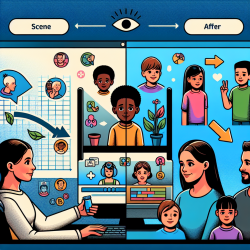Introduction
In recent years, the management of pain, particularly with the use of opioids, has become a critical area of focus in healthcare. The CDC's updated Clinical Practice Guideline for Prescribing Opioids for Pain — United States, 2022, provides a comprehensive framework to guide practitioners in making informed, evidence-based decisions. This blog aims to highlight key insights from the guideline, encouraging practitioners to integrate these findings into their practice to improve patient outcomes.
The Importance of Evidence-Based Practice
Data-driven decision-making is at the heart of effective healthcare. The CDC guideline emphasizes the need for clinicians to evaluate the benefits and risks of opioid therapy meticulously. By using the Grading of Recommendations Assessment, Development, and Evaluation (GRADE) framework, the guideline ensures that recommendations are based on systematic reviews of scientific evidence, considering both benefits and harms.
Key Recommendations for Practitioners
- Nonopioid Therapies: For many types of pain, nonopioid therapies are as effective as opioids and should be maximized. Practitioners should consider nonpharmacologic and nonopioid pharmacologic therapies first.
- Individualized Care: The guideline underscores the importance of individualized, patient-centered care. Practitioners should engage patients in discussions about the realistic benefits and known risks of opioid therapy.
- Risk Assessment: Before initiating opioid therapy, clinicians should evaluate the risk for opioid-related harms and incorporate strategies to mitigate these risks, such as offering naloxone to patients at increased risk of overdose.
- Regular Reevaluation: Clinicians should regularly reassess the benefits and risks of continued opioid therapy with patients, ensuring that treatment goals are being met and adjusting the treatment plan as necessary.
Implications for Pediatric Speech Language Pathology
While the guideline primarily addresses opioid prescribing for pain, its principles of evidence-based practice and individualized care are highly relevant to pediatric speech language pathology. Practitioners in this field can draw parallels in their approach to therapy, ensuring that interventions are tailored to the unique needs of each child and are grounded in the latest research.
Encouraging Further Research
The CDC guideline not only provides a framework for current practice but also highlights areas where further research is needed. Practitioners are encouraged to contribute to the growing body of evidence by engaging in research that explores the long-term effectiveness of various pain management strategies, particularly in pediatric populations.
Conclusion
The CDC's Clinical Practice Guideline for Prescribing Opioids for Pain is a valuable resource for practitioners committed to providing safe and effective pain management. By integrating these evidence-based recommendations into practice, clinicians can enhance patient outcomes and contribute to the ongoing effort to address the opioid crisis.
To read the original research paper, please follow this link: CDC Clinical Practice Guideline for Prescribing Opioids for Pain — United States, 2022.










